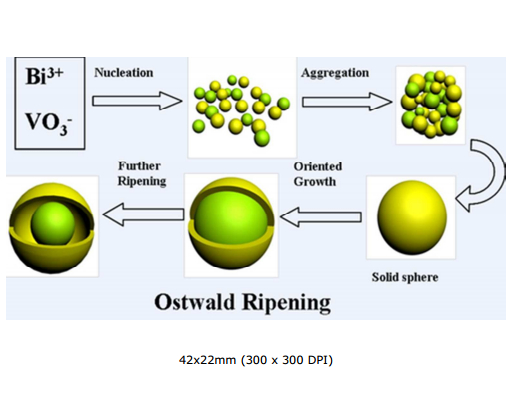In recent years, BiVO4 has been extensively studied as a promising visible-light-driven catalyst candidate due to its great visible-light absorbing ability. In a study by scientist of TIPC,CAS, novel core-shell structured(CSS) BiVO4 hollow spheres with an ultra-high specific surface area were synthesized via a onepot, surfactant- and template-free hydrothermal route. The as-obtained products were characterized by scanning electron microscopy, X-ray diffraction, nitrogen adsorption-desorption experimentation, Raman and UV-vis absorption spectroscopy, respectively. The formation mechanism of the BiVO4 products was proposed in terms of the morphological evolution with prolonging the reaction time. The as-prepared CSS BiVO4 hollow spheres similar to Russian dolls were comprised of an inner core and an open outer shell, leading to an ultra-high specific surface area about fifty times as that of solid spherical counterparts fabricated by the traditional solid-state reaction method. As a result, the CSS BiVO4 hollow spheres exhibited a superior photocatalytic activity over not only solid BiVO4 spheres but also other morphological products such as biscuits and plates in the photodegradation of rhodamine B under visible-light irradiation. CrystEngComm, 2014 SEM images of the CSS BiVO4 hollow spheres obtained at various reaction times: (a) 0 h, (b) 3 h, (c) 5 h and (d) 10 h The close-up sequence of the evolution of the CSS BiVO4 hollow spheres: (a) 1 h, (b) 3 h, (c) 5 h, (d) 8 h, (e)10 h and (f) 15 h Schematic illustration of the proposed formation mechanism of the CSS BiVO4 hollow spheres |

